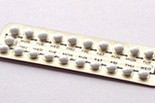Breast self examination is recommended to all women over 20, every month. Read on to find guidelines on how to effectively do a breast self examination.
Let’s find out more about breasts
Breasts are made up of:
- glandular tissue where milk is produced, also known as lobules
- ducts which allow the transfer of milk to the infant, via the nipple
- fatty tissue around the glands
- the nipple which has tiny openings for the milk to pass through
- the areola (pigmented skin which surrounds the nipple)
- connective tissue which surrounds the duct and lobules
Breasts have two main functions:
- a nutritive function of feeding infants
- a sexual function
These functions of the breasts are both extremely important to how we perceive ourselves as women. To have a problem with our breasts and to face possible disease and surgery is both a physical and psychological issue for women and their families.
Women need to take care of their breasts and in order to do that we need to be familiar with how they look and how they feel.
What is a breast self examination?
This is a two stage check of your breasts, which can be done at home in privacy and comfort.
The first few times may feel strange as you become accustomed to the appearance and feel of your breasts.
Appearance
Firstly, take all your clothes off your upper body and look at your breasts in a mirror:
- With your hands by your side
- With your hands on your hips and your elbows flexed forward
- With your hands clasped behind your head
The purpose of this is to observe your breasts for any of the following:
- Changes in colour
- Changes in size
- Changes in shape
- Any redness or rash
- Dimpling of the skin
- Changes to the nipple, such as inverted nipple
- Nipple discharge that occurs without squeezing the nipple
Feeling the breasts

If you perform the breast exam in the shower, use a shower gel as a lubricant. Otherwise a light lotion or oil can be used, to make it more comfortable. Ensure that you use firm pressure, in order to detect any lumps or changes deep in the breast tissue.
For smaller breasts the whole examination can be done in the shower. For larger breasts the upper part of the breasts could be done in the shower, but for the lower part of the breasts it will be easier and more thorough if you are lying down.
Smaller breasts
In the shower, lift your left arm behind your head and, with the right hand, check your left breast tissue. Lower your left arm and check your left arm pit with your right hand.
Now raise your right arm and check your right breast, using your left hand, then lower your arm and check your right arm pit.
Larger breasts
Firstly feel your upper breasts either sitting or standing, whichever you find easiest. To check your lower breasts, lie on the bed with a pillow under your left shoulder, raise your left arm and check your lower left breast using your right hand. Repeat on the other side.
Do not forget to check your arm pits.
When should women do breast self examinations?
All women over the age of 20 are recommended to do a breast self examination every month.
Whilst having a periods a good time to do a breast self exam is one week after your period has finished – for example, day 1 is the first day of your period and your period finishes on day 5, so day 12 would be an ideal time to examine your breasts. They are less tender at this time and less likely to be lumpy due to hormonal changes.
During breast feeding a good time to check your breasts is after a good feed, so your breasts are ‘empty’ and the examination is more comfortable.
After the menopause choose a regular day – for example the first day of every month – so that you do not forget.
What are the benefits of breast self examinations?
By performing a regular self check of the appearance and feel of your breasts you will become familiar with how they normally look and feel. Any changes to your breasts will then be more evident.
The earlier changes to the breasts are detected and reported to your doctor the better.
- Your doctor can either put your mind at rest
- Or arrange further investigations for you.
If you do have breast cancer (but remember most lumps are benign) the earlier you are treated, the better your chances of successful treatment and conserving your breasts.
What are the risks of breast self examinations?
Many lumps are benign – non cancerous – and are as a result of hormonal changes in the breast. Finding a breast lump is an anxious time and often the worry is unnecessary as the lump is harmless.
If all women act early on any breast changes, although there may be some unnecessary stress over the benign lumps, there will also be improved outcomes for the women that do have cancer and need early treatment in order to survive.
So check your breasts monthly and report any changes to your doctor.
Useful articles
For more information on Mammograms, click here
Cervical screening is recommended to all women over 20 years who have ever had sexual intercourse – visit our article on Cervical Smear to find out more.







I love the way you have written this piece. So positive and encouraging. Most articles of this nature are fear producing. Thank you x
Thank you! Glad you enjoyed it 🙂